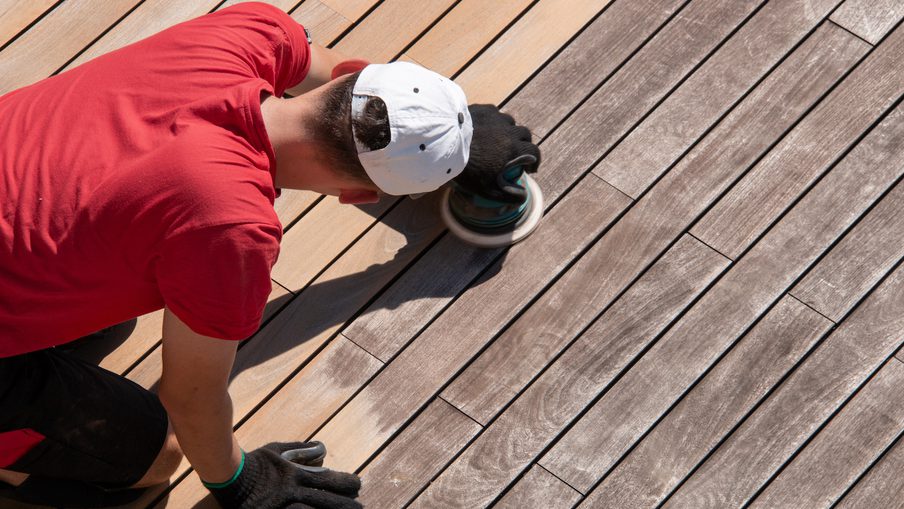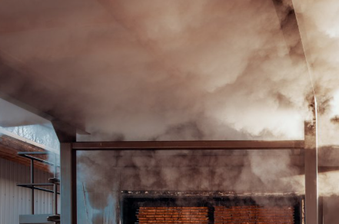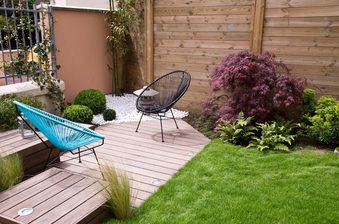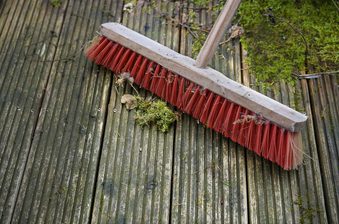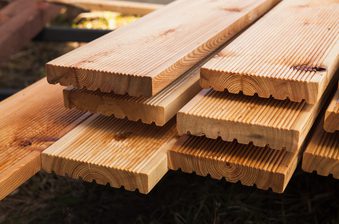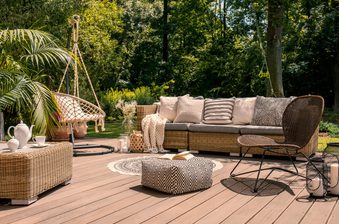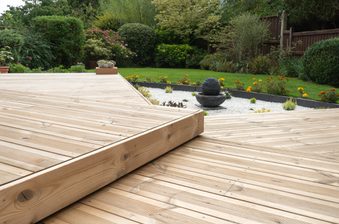Whilst timber is a superbly attractive and highly durable material for a deck, like any natural product, it can start to show its age after a while.
After years of exposure to the elements, footfall, child-related damage and fallen cups of tea, there’s a good chance that your timber decking has seen better days.
Fear not — all is not lost. Here’s a step-by-step guide for bringing it back to life.
1. Check for damage and make any repairs
Give your decking boards and joists a close inspection for signs of rot. You may be able to salvage them by carefully removing the dead, rotten wood with a knife.

If some of the boards are too far gone, then remove the screws, prise the board away and get a replacement fitted. If the entire structure is ridden with rot, then you might need a new deck!
2. Remove old finishes and sand the deck
Once you’re happy that there’s no rot, it’s time to remove any old finishes from the decking. These can be taken off a paint scraper, moving in the direction of the wood grain.
Then, get a sander and move around the entire deck to get rid of any leftover treatments. This can be done manually with a sanding pole or rubbing block, or with a power sander.
Sanding will smooth the surface and reveal a fresh new layer of wood. It will also help stain or sealant to penetrate the woo — more on these a little later.
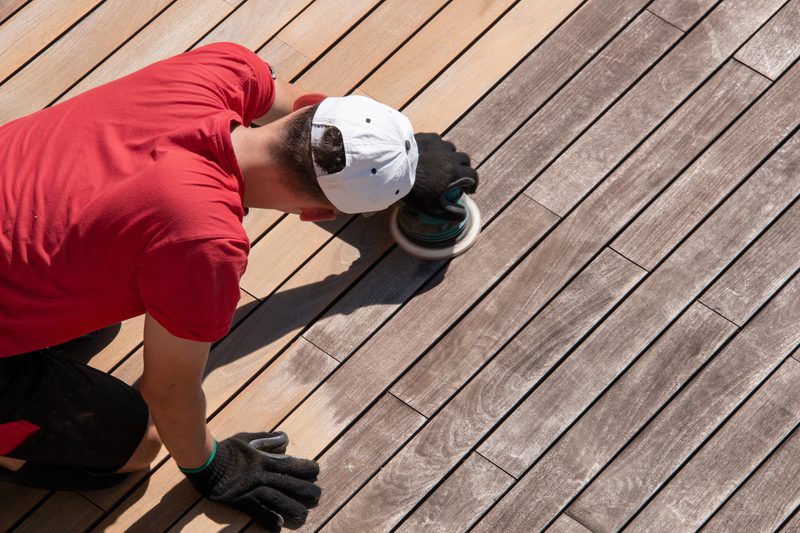
3. Consider a wood cleaner and stripper
If your decking is particularly badly stained and there’s stubborn leftover varnish that you can’t get rid of with a sander, then a decking stripper might be in order.
After sanding and sweeping the deck of any obvious debris, apply a product like Owatrol Prepdeck. When used undiluted, this powerful product will strip away any old finishes, stains, marks and grade stamps and prepare the deck for further treatment.
If your decking is quite weathered, another suitable product is Owatrol Net-Trol — it’s a wood cleaner and brightener that restores the colour back to older wood.
Wood strippers like this can be applied with a brush, roller or sprayer. Be sure to follow the product manufacturer’s instructions. Once thoroughly cleaned, allow the wood to fully dry.
Can you pressure wash decking?
You can — after you’ve used a wood stripper, what’s remaining can be blasted away with a pressure washer. To avoid damaging the wood fibres, use a medium setting. Follow the grain of the wood along the length of the boards, moving up and down each one.

4. Stain and seal
Once the deck is fully dry, apply a high-quality, penetrating wood stain or sealant. Depending on your desired look and level of protection, you have a few options.
Transparent: If you want to showcase the wood’s natural beauty, then a transparent oil will do the trick at protecting your wood from the worst of the outdoor elements. A product we like to recommend for colourless protection is Owatrol H4 Wood.
Semi-transparent: These provide both aesthetic beauty and great outdoor performance. As well as excellent weatherproofing, you can choose a colour tint to help the wood’s grain pattern to pop. There are also some excellent semi-transparent stains — two we’d recommend are Owatrol Aquadecks and Owatrol Textrol.
Opaque: Solid-colour paints can afford excellent protection and allow you to take full control of the colour of your deck. That said, they can require more frequent topups to stay looking their best. Oh, and they conceal almost all of the wood’s beauty!
As with washing the deck, treatments should be applied by following the grain — make sure to get into the end gaps, too. This can be done with a roller or sprayer, but for the most even and consistent results, we’d recommend using a quality brush. As well as a large brush, choose a small brush to get into those spaces between the boards.
Also, as before, be sure to follow the product manufacturer’s guidance.
When is the best time to treat decking?
A dry, overcast day where the temperature is between 10–25C is absolutely ideal — so likely spring or summer. The biggest factor in coating failure is moisture, so rain is a huge no-no.
Similarly, extremes of temperature can affect uptake; try to avoid baking sunshine — this can cause the treatment to dry too quickly and unevenly.
Regular maintenance top tips
Now you’ve got your deck back to its best, it only takes a little bit of TLC to make sure it stays that way.
As well as regular sweeping, commit to a clean every couple of months. A mild wood cleaner scrubbed into your decking with a stiff bristle brush will help to keep algae, grime and other bacterial growth at bay. You can also make your own mild deck cleaner — simply mix one part bleach with three parts water.
Over time, through UV, moisture and wear and tear, your oil or stain will wear a little thin. If the finish is starting to fade, then a reapplication won’t hurt. Check the product manufacturer’s guidelines.
… or rip it out and replace it!
Even the most well-maintained decks have a service life. If your deck is rotten beyond repair or you’d like to try a fresh new design or style, explore our range of quality timber decking.
Our decking is available in many designer profiles and species imported from across the world. We even stock composite decking, which essentially eliminates all of the maintenance! We also offer a full range of Owatrol woodcare products.
Get in touch using the button below to start your project. Also, for more project inspiration, be sure to check out our decking hub.
